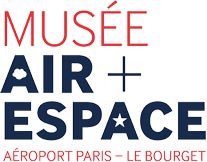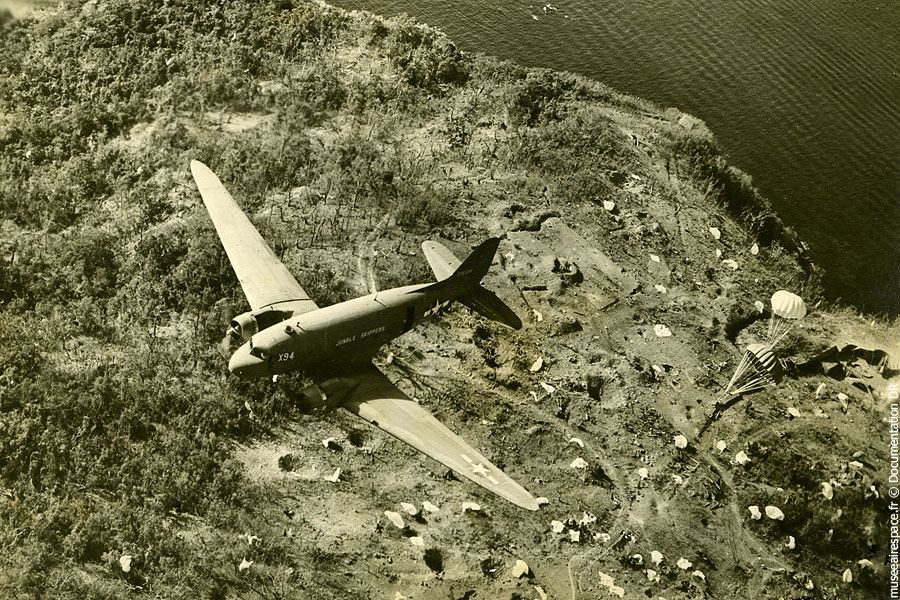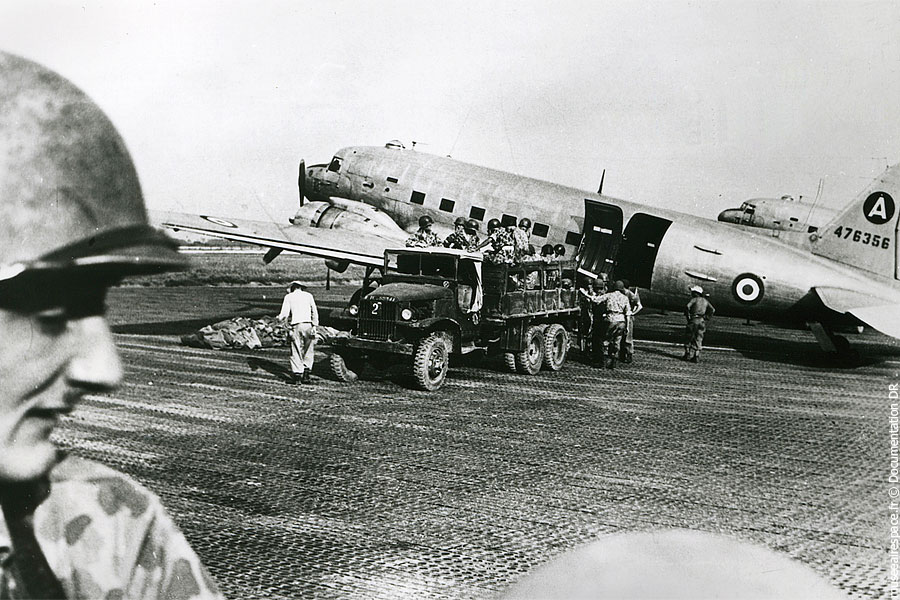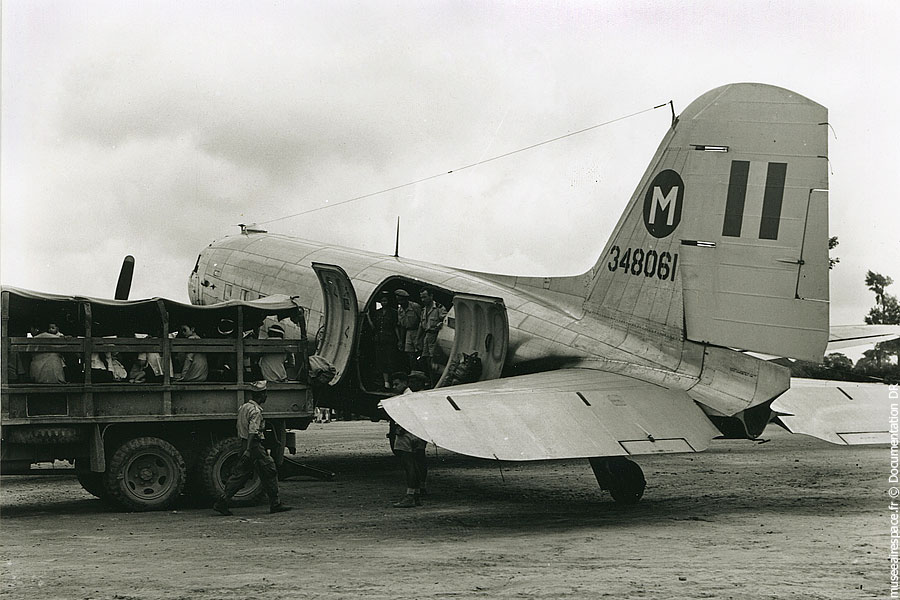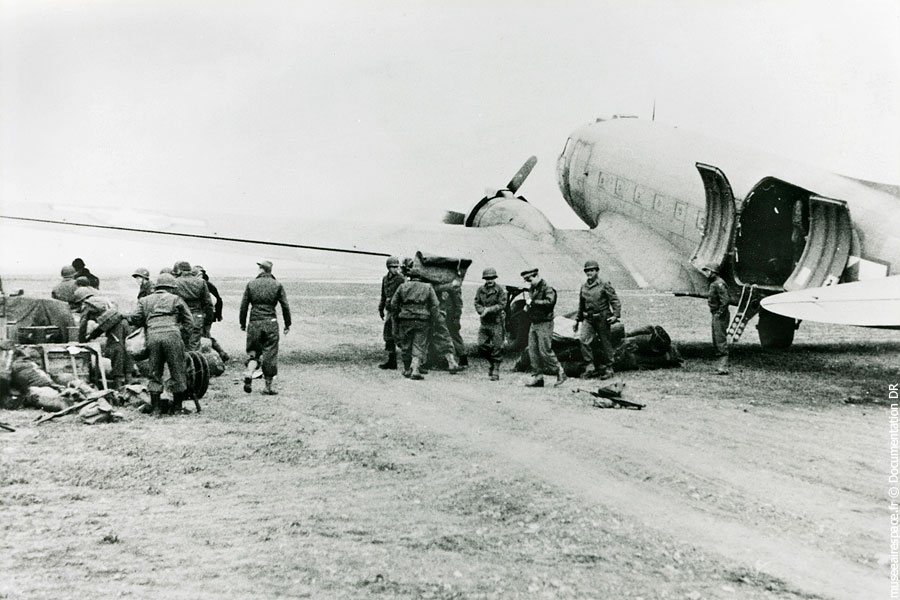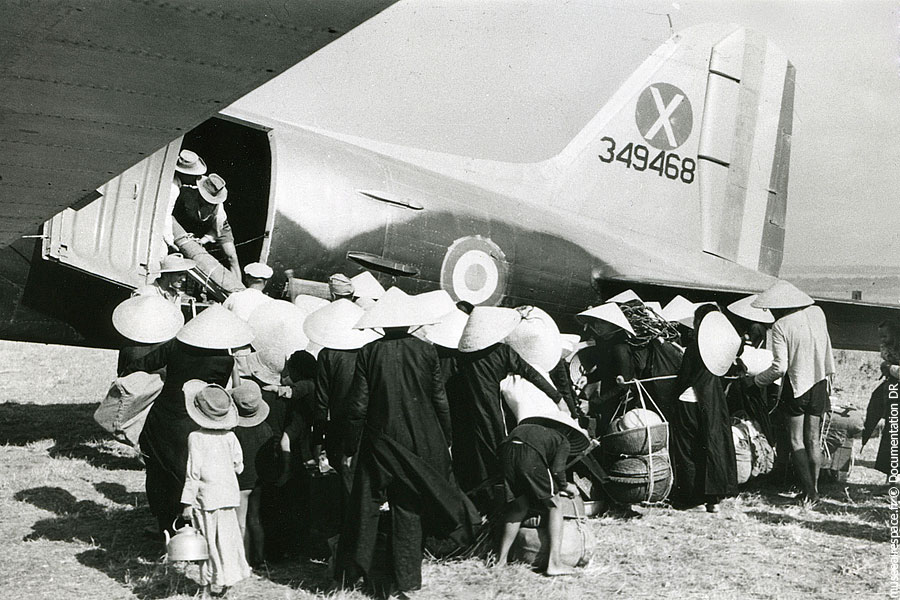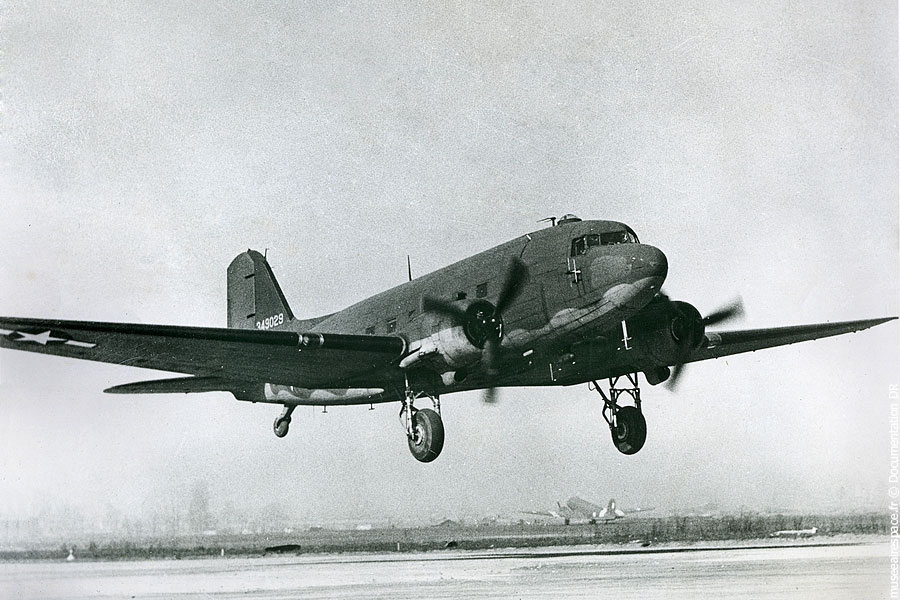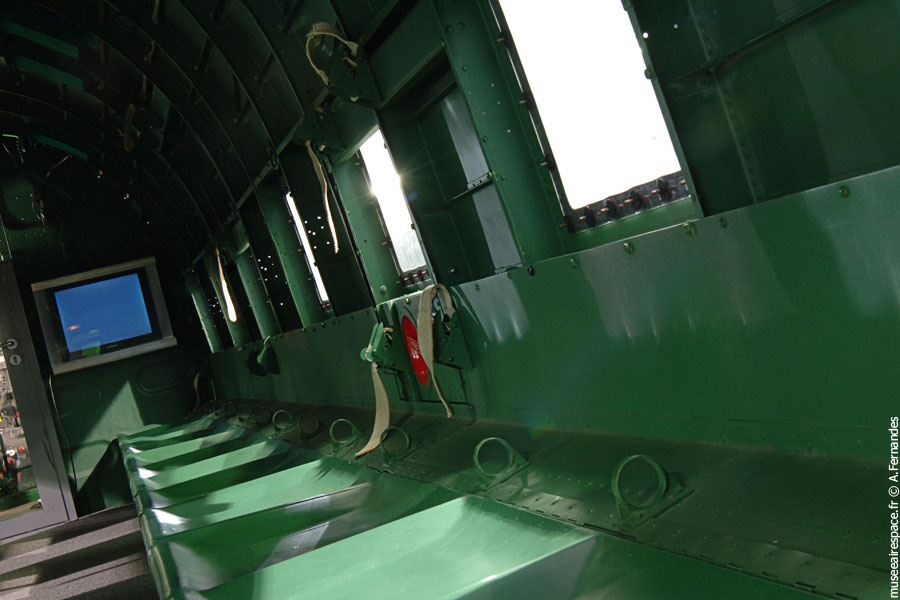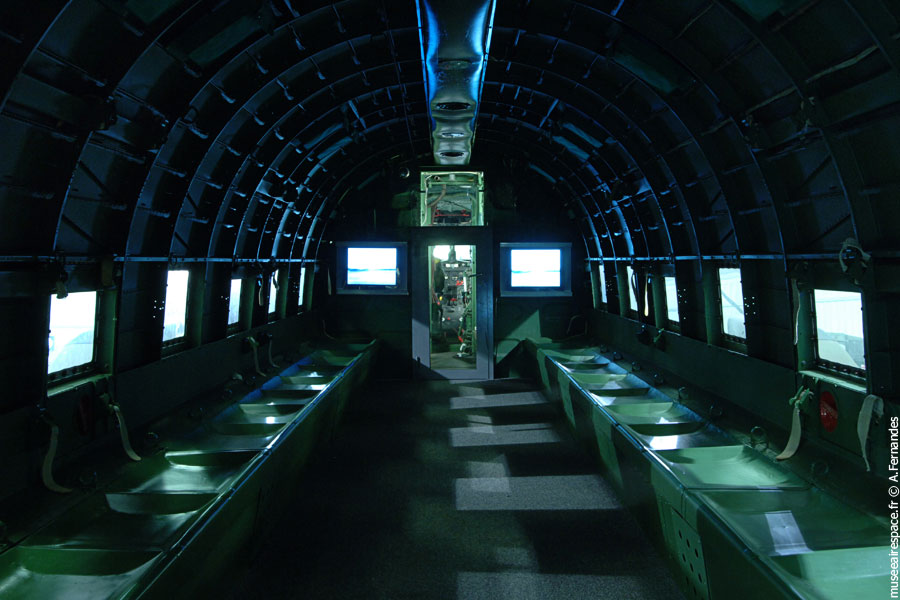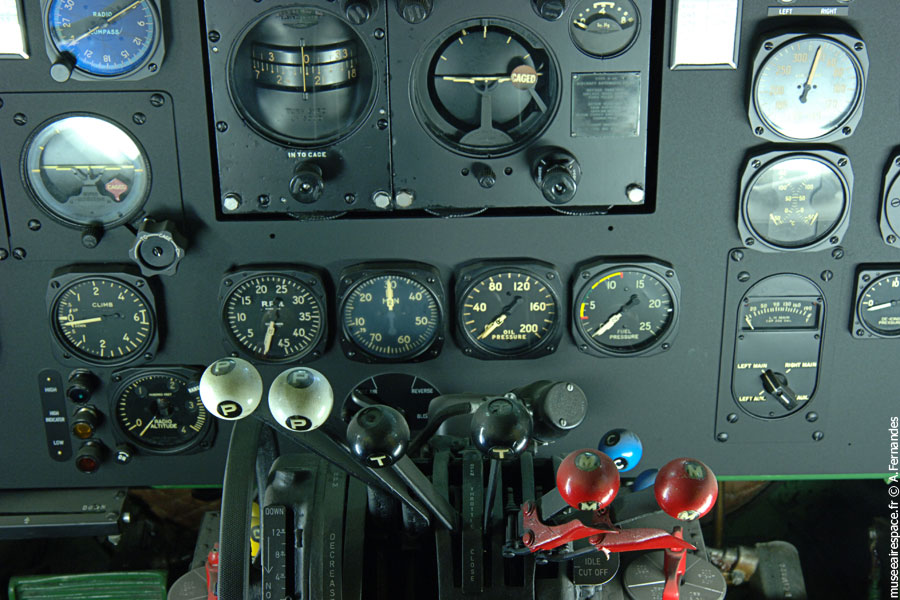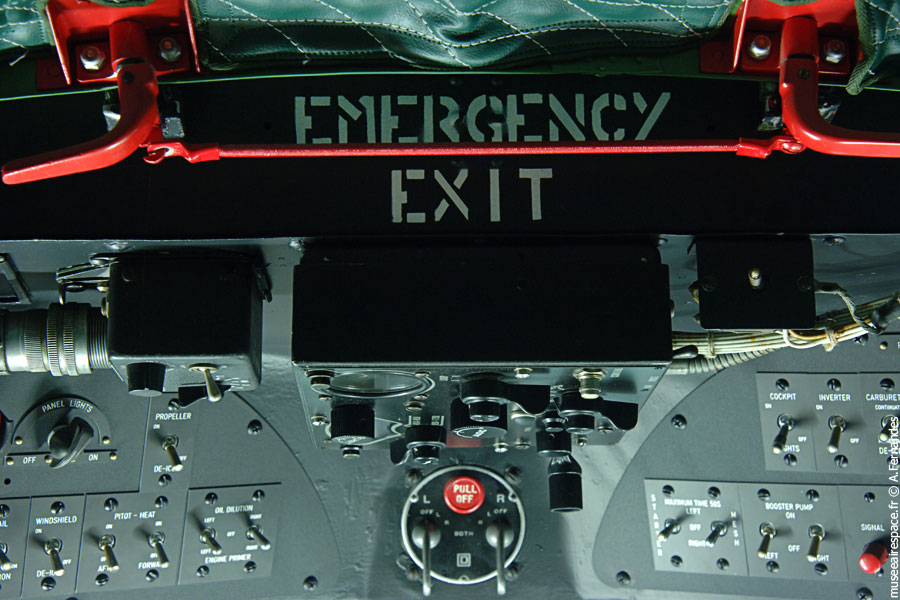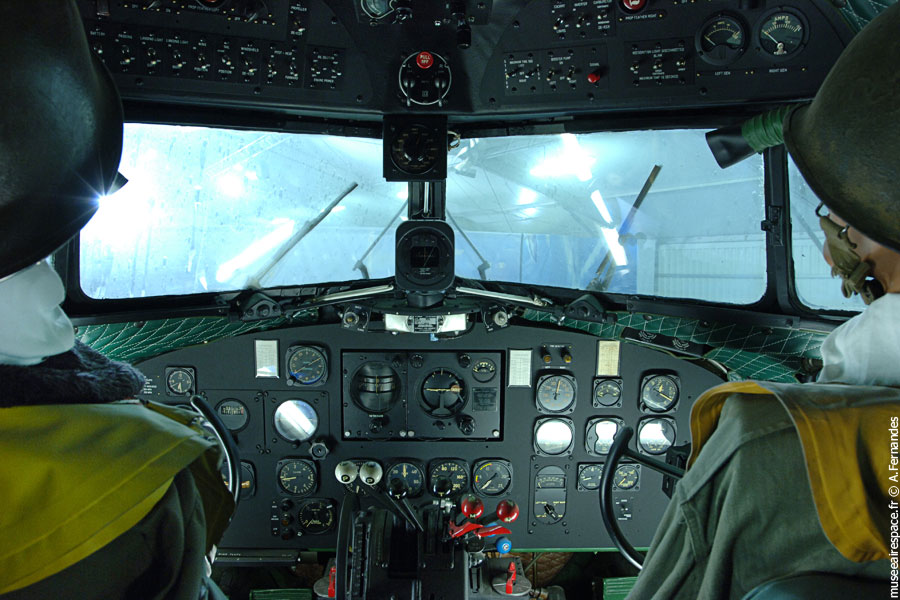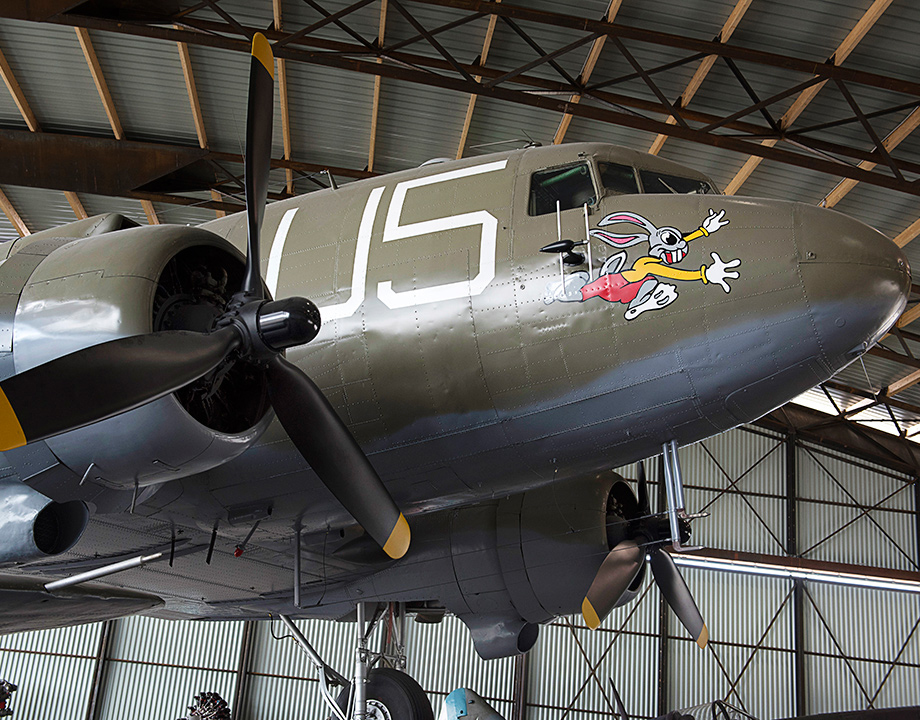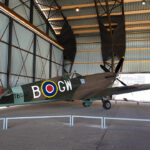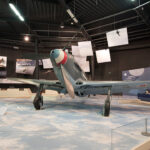At the end of World War II, General Eisenhower declared that the C-47 had been one of the four weapons that had enabled the United States to achieve victory – alongside the bazooka, the Jeep and the atomic bomb. This shows how highly this aircraft was regarded by everyone.
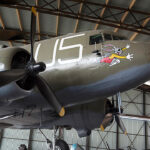
Douglas C-47A Skytrain Dakota
The Douglas C-47A Skytrain (Dakota) features 2 Pratt & Whitney R-1830-92 engines of 1,200 hp each.
- Envergure : 29.11 m
- Longueur : 19.43 m
- Hauteur : 5.18 m
- Surface alaire : 91.7 m²
- Masse en charge : 14060 kg
- Vitesse maximale : 370 km/h
- Plafond pratique : 7315 m
- Distance franchissable : 2575 km
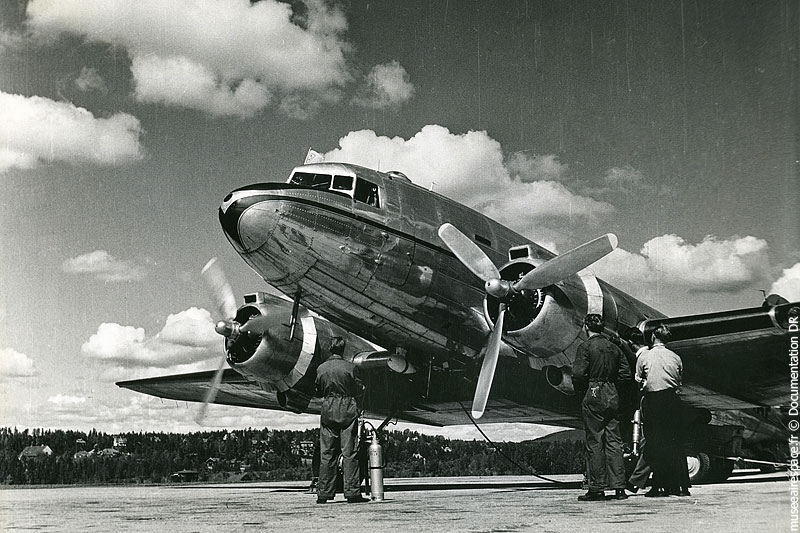
A civil plane adapted for the military
A military iteration of the DC-3 which had flown for the first time on 15 December 1935, the C-47 featured a double-panel door on port side, and a reinforced floor to accommodate a variety of loads. The first deliveries began in 1942 and 5,253 C-47A version planes with enhanced details were produced.
Fully versatile
Used on all fronts, its availability, adaptability to all tasks and its sturdiness
guaranteed support for troops in the most distant locations. When Colonel Doolittle left China after his famous raid on Tokyo in 1942, no fewer than 75 passengers, including 22 children, were on board the plane that was normally designed for 21 passengers! A C-47 was even credited with an official victory against a Mitsubishi Zero, which was pursuing it so low that it hit the ground!
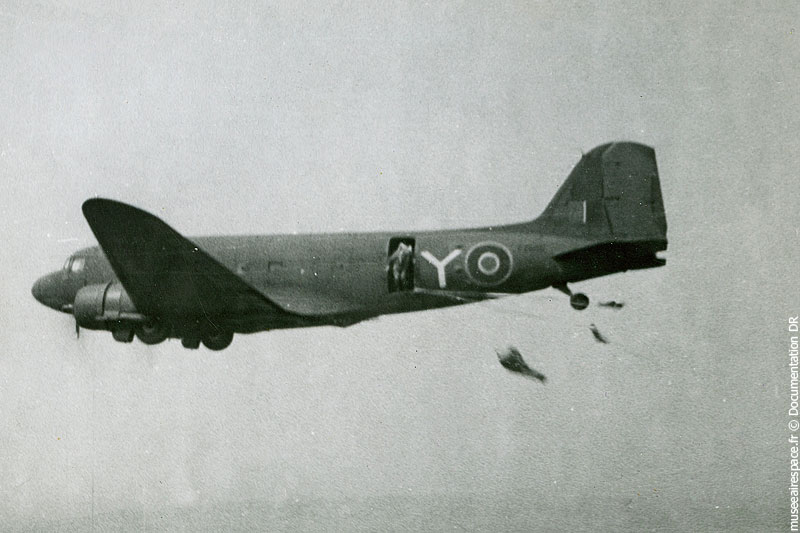
The landings plane
Dubbed Dakota by the British, the C-47 played a massive part in the Normandy landings, dropping parachutists and then resupplying the troops.
Even produced by the enemy
To the 10,047 American planes were added 414 L2Ds produced under license by Showa and 71 L2Ds by Nakajima in Japan, and over 2,000 Lisunov Li-2 in the USSR. Both civil and military, the Douglas biplanes embarked on a successful second career after the war.
The model at the museum
The museum presents the C-47A 42-92449 (c/n 12251) which served in the 8th Air Force in Europe from 25 March 1944. Purchased by the company Aigle Azur in 1948, it was acquired by the French Air and Space Force in 1960, which used it for ten years before donating it to the Museum. The plane was repainted in the colours of the 81st Troop Carrier Squadron of the 436th Troop Carrier Group. The Buzz Buggy was flown by Lt. Duane Smith during the Normandy landings.
